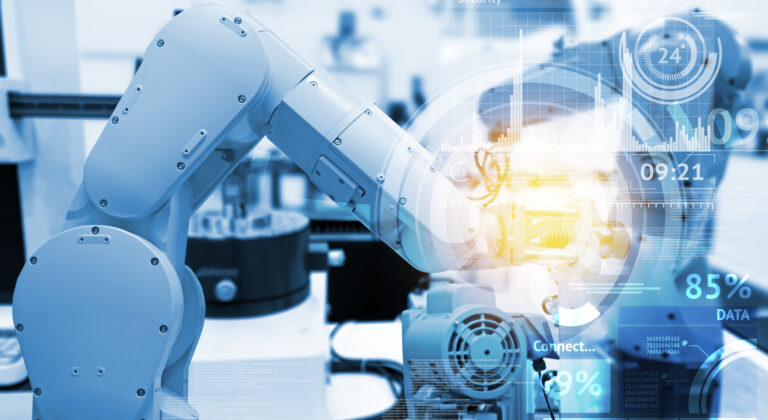
The manufacturing and automation industry has become a fast-evolving, competitive market. Product requirement demands are always increasing, making the adoption of new techniques a key requirement for success. The German automotive industry has been a leader in advancing the use of virtual commissioning (VC) in manufacturing. Companies deploying the new methods report a reduction in delays and costs associated with system integration and commissioning.
Despite the limitations of modeling technology in years past, researchers and manufacturing experts have been working on virtual commissioning since 1999. A highly cited study from Germany in 2006 demonstrated that VC techniques could save up to 75% of the time required for traditional commissioning. Today, new technologies and software integrations are significantly reducing the historical barriers associated with virtual commissioning.
In the past, the technology required to do virtual commissioning has only been accessible to niche experts and academic researchers. Today, powerful modeling tools and compatible information standards make virtual commissioning accessible to all manufacturers. This article summarizes the state of the art in virtual commissioning, much of it developed by German researchers.
Using Digital Twins for Virtual Commissioning
To be practical for every project, the virtual plant model should be usable by all relevant employees, not just specialists or niche researchers. At the same time, businesses should not oversimplify it. The answer lies in the use of a digital twin.
A digital twin is a dynamic, virtual representation of a corresponding physical thing, including production systems. These models can range widely in their purpose and fidelity. They serve as a powerful connection to the product for diagnostics, design changes, as well as for commissioning. Companies increasingly use digital twins to optimize their products in ways that were previously either unrealistic or impossible.
Using system-level modeling tools, the creation of a model-driven digital twin can begin alongside the design process. Modeling tools allow engineers to begin by importing CAD data or working only with 1D models. Recent advances in the tools used to import CAD data make digital twins easier to create. Model-driven digital twins are now an important trend in the automation industry, making VC more accessible while adding other capabilities throughout the design process.
Interface Issues
Creating a seamless connection between models was a significant early challenge in the development of virtual commissioning. The complex physics of a given plant model were typically simulated using a platform different from the logic-based systems of PLC design. In 2010, the Functional Mock-up Interface (FMI) was developed by the Modelisar consortium, initiated and organized by Daimler AG. The goal was to improve the exchange of simulation models between suppliers and OEMs. Modelisar quickly became a pan-European research team with strong support from German industry and research institutions, including Fraunhofer and Volkswagen AG. FMI was launched as a standard interface for a variety of model-based processes.
The FMI standard is a collection of all the necessary information for a given model, organized in a way that allows for import and export with a variety of software tools. FMI has gained increasing adoption, and, as of 2017, over 40 common engineering tools support it. With this tool support, FMI is now a key technology for exporting model-based digital twins to the PLC control software for a more integrated test platform.
Keeping the digital twin model always in sync for all elements of the machine can be challenging. Production systems present a cross-domain challenge involving mechanical, electrical, electronic, and software components. A new method presented by German researchers Holger Zipper and Christian Diedrich in 2019 offers a new way to streamline synchronization of digital twin elements.
The digital twin data model is a combination of engineering models from all subdisciplines and data driven models as the status of either the digital or physical twin changes. The new synchronization method uses an anchor point, defined as data or information from mechatronic components that can be used to recognize changes in the real system.
Changes in information documented by engineers are used to identify an anchor point. For example, if an engineer added a new mechatronic part to the machine, the change information must include documentation of the changed information. The workflow required has three steps: detect the anchor point; identify the affected engineering models and the relationships between them; and check consistency between the models.
The Evolving Grammar of Virtual Commissioning
In 2018 a German-Austrian research team led by Martin Ahrens at Johannes Kepler University reviewed the state of the art for virtual commissioning and realized a greater understanding of procedure was required. They proposed a three-step methodology for introducing a model-based approach to virtual commissioning. The three steps are:
- Process and Tool Analysis: Examine and visualize established processes and tools; analyze work and data flows for dependencies and bottlenecks.
- Reference Process and Tool Landscape: Develop an enterprise-specific reference process and tool landscape; Evaluate and optimize using existing development data.
- Gradual Implementation: Identify and elaborate an appropriate introduction strategy; implement a reference project using a pilot project.
The research team found that the high level implementation of such an industrial grammar would “contribute to a broad acceptance for new development methods” in the enterprise for virtual commissioning. They also acknowledged it is “a big research challenge to continuously synchronize the virtual model and the real production system.”
Constructing the Model-Based Digital Twin
System-level modeling tools construct a model-based digital twin. Either existing CAD information or design concepts using the tool’s component libraries develop the virtual model. One system-level modeling capability is a crucial tool in this process: automatic CAD import. With this functionality, the digital twin then starts with validated geometries. Without previous CAD models, engineers can begin by using drag-and-drop components that can be customized to their specific designs. This process typically requires more time and effort than CAD import.
How detailed should the digital twin be? That depends on the simulation required. A higher fidelity model requires more effort to create, but can answer increasingly specific design questions, and offer a more realistic representation of performance for PLC validation. In the past, engineers found high-fidelity models difficult to create or unusable when requiring real-time or near real-time data. MapleSim specifically produces simulation code optimized for simulation speed.
Connecting to Automation
Advanced tools can create a digital twin and export it as an FMU. The twin includes all the necessary information for usage by the automation tool. An increasing amount of automation tools support an FMU standard. Using an automation tool, the engineer must import the FMU, and then can have access to the model’s inputs and outputs, in order to define their connection with the virtual PLC code.
At this point, both the virtual model and the virtual PLC code reside within the same environment. While testing can begin, it is also possible to use PLC code designed with the digital twin model in the controller logic itself. If the digital twin is sufficiently rich and validated for accuracy, the engineer might forego the requirement for specific physical sensors on the final product and instead instruct their PLC code to call for specific information from the digital twin instead.
This technique is an emerging method to reduce the costs associated with installing expensive physical sensors on a machine, since the digital twin is able to simulate the system in real-time, offering the same information that a physical sensor might.
Beyond virtual commissioning, businesses can use digital twins for conceptual development, online diagnostics, virtual sensors, and predictive maintenance.






